Homemade Authentic Pasta
Italian cuisine, renowned for its simplicity and deep-rooted traditions, has given the world a culinary masterpiece, homemade Italian pasta! There’s something truly special and amazing about making your own pasta from scratch, transforming basic ingredients into tender ribbons, shapes, or even delicate parcels of deliciousness!
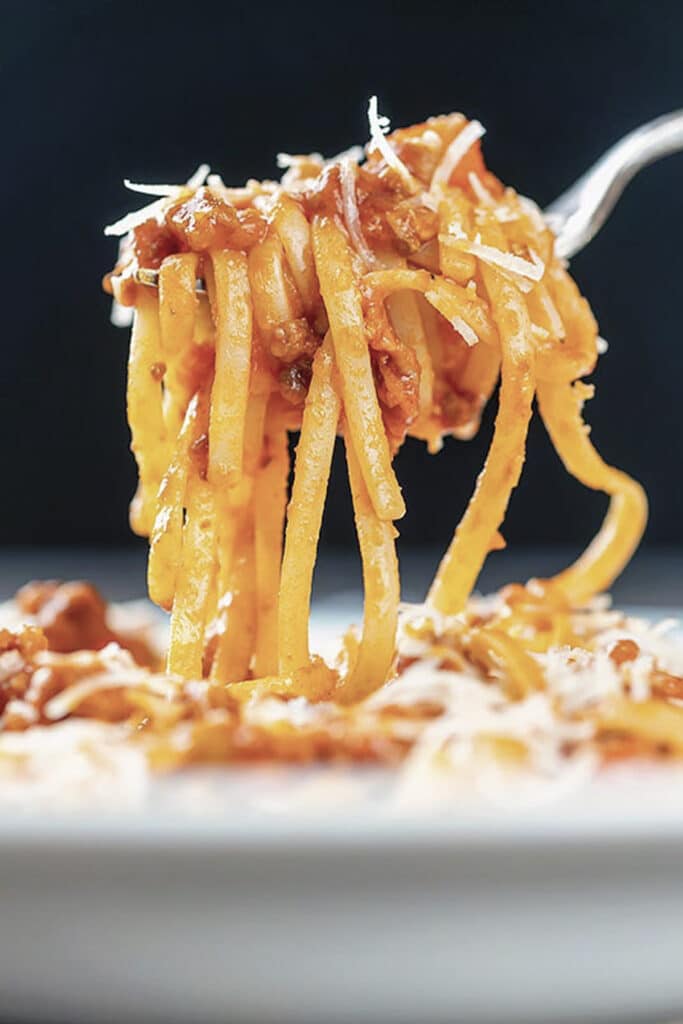
One of the most rewarding food experiences in Italy has to be homemade pasta, whether it was made by my mother in law or sister in law, whether served with a simple meat sauce or ravioli, there’s really nothing like it!
At the heart of every homemade Italian pasta creation is the dough, a few basic quality ingredients. The quality of ingredients and the careful balance between them are essential.
For this recipe we used a combination of Italian 00 flour and a sturdier higher protein flour, in Italy referred to as Manitoba flour or also known as all purpose or plain flour. Other types of flour that are used varies by region, some using a combination of semolina and soft wheat flour (00) being other popular choices. The addition of eggs brings richness and flavor to the pasta, creating a balance of texture and taste.
Recipe Ingredients
- Flour – we used a combination of all purpose and 00 flour
- Eggs – large room temperature eggs
- Olive Oil – good quality light or extra virgin olive oil
- Salt – for taste
Remember for every large egg add 100 grams of flour. This is again a recipe that is easier made with the metric system.
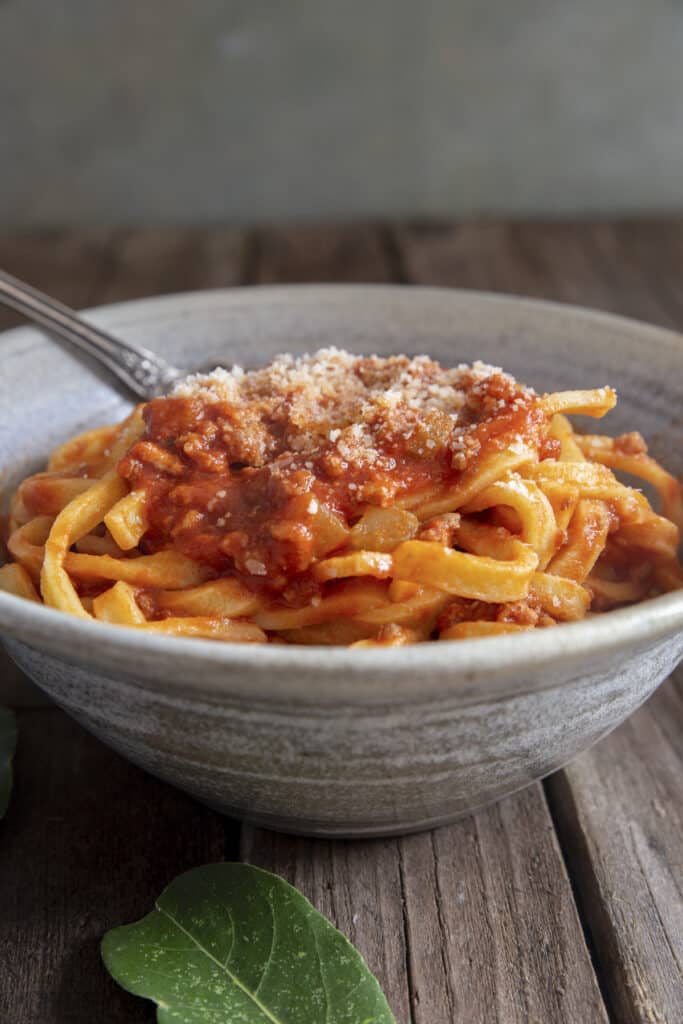
Why add olive oil?
All you need is a drizzle but it helps to enrich the taste of the fresh pasta, making it more fragrant and elastic. Also adding a tablespoon to the boiling salted water will keep the fresh pasta from sticking together while cooking.
How to make Homemade Pasta
On a flat surface place the flour and make a well in the middle, add the eggs and gently start to combine the the two, add a drizzle of olive oil and the salt, continue to bring the ingredients together and knead to form a smooth and elastic dough.
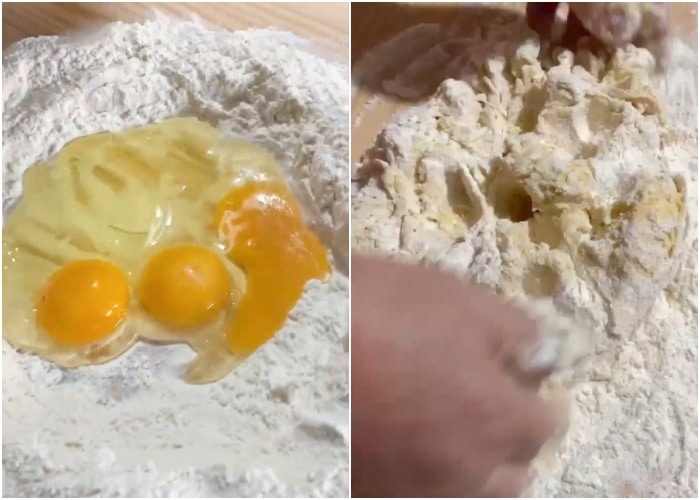
Cover the dough with a clean cloth and let rest. This step is extremely important as it allows the gluten to relax, the flavors to blend together so the dough will achieve the perfect texture.
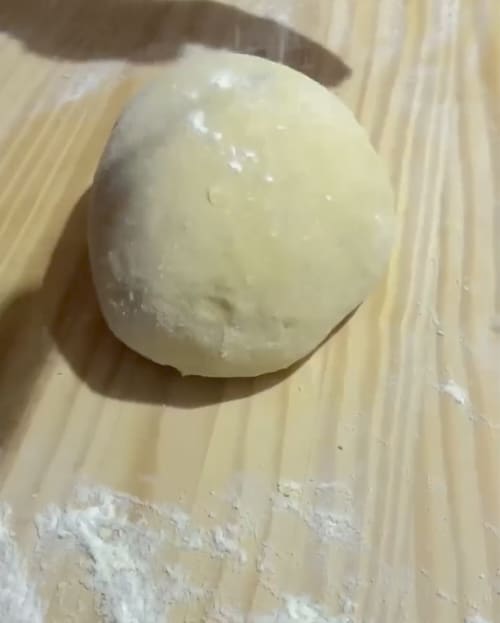
After resting, the dough is then sliced and flattened.
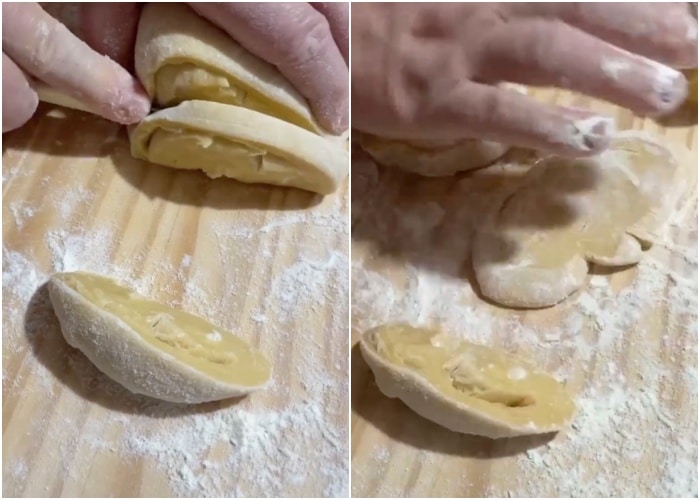
Then rolled out into thin sheets, (be sure to keep the dough well floured to avoid it sticking), either with a machine or by hand, or shaped into a variety of forms.
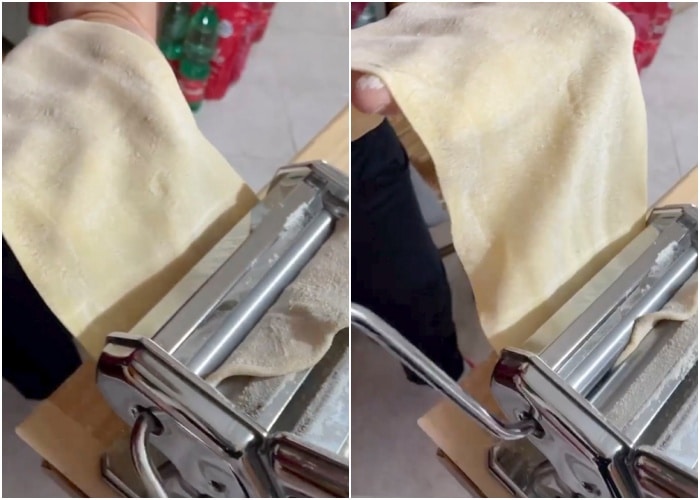
We decided to use the machine again to cut into fettucine, then place the formed pasta on a floured flat surface, be sure to lightly dust the pasta again with four to keep it from sticking.
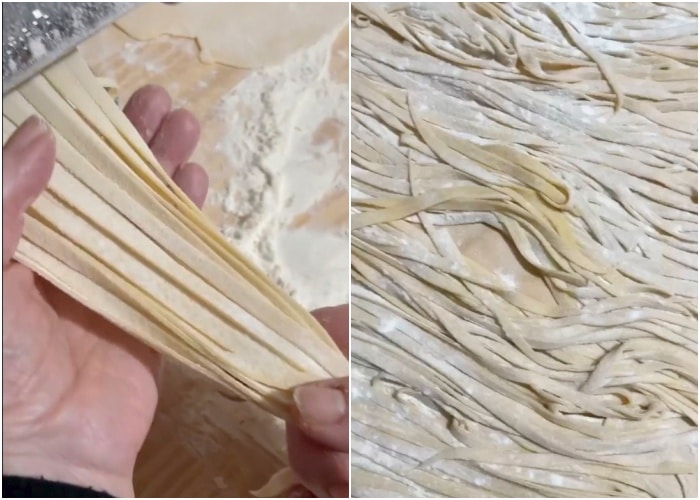
In a large pot of boiling salted water, (adding a drizzle of olive oil), cook the fettuccine until al dente, drain and toss with your choice of sauce and serve with a sprinkle of parmesan cheese if desired.
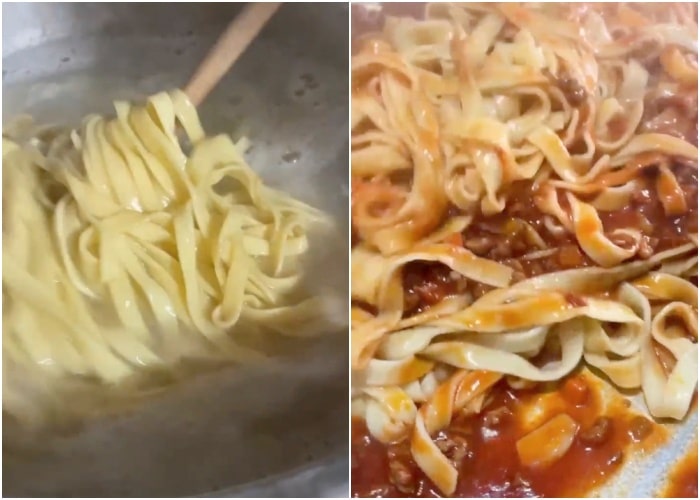
How To Cook Pasta
Always cook the pasta in enough water, you will need 4 cups (1 litre) for 3 1/2 ounces (100 grams) of pasta. Be sure to choose the correct size pot, you don’t want the water to reach the rim and overflow, because pasta, when cooked, can increase in volume up to three times. Always cover the pot when boiling the water, but remove it once the pasta has been added.
Calculate about 7 g of salt for every litre of water. Add the salt only when the water has reached a boil and never before.
After adding the pasta to the pot, bring it back to a boil and keep it at a boil while the pasta is cooking. This allows the pasta to achieve an even cooking, be sure to stir frequently while it is cooking.
Never pass the freshly drained pasta under running tap water. You should never stop the cooking, even when you are making a cold pasta salad, let it cool by adding a drizzle of olive oil to prevent it from sticking.
Drain the pasta al dente, this is done by tasting, if it has a bite to it it’s ready, nothing worse than mushy pasta.
How to serve Homemade pasta
Homemade pasta is a canvas for a wide range of sauces, from the simplicity of aglio e olio to the richness of a Bolognese ragù. From Fettuccine to Ravioli to Lasagna! The choice of sauce can transform the same pasta shape into entirely different culinary experiences.
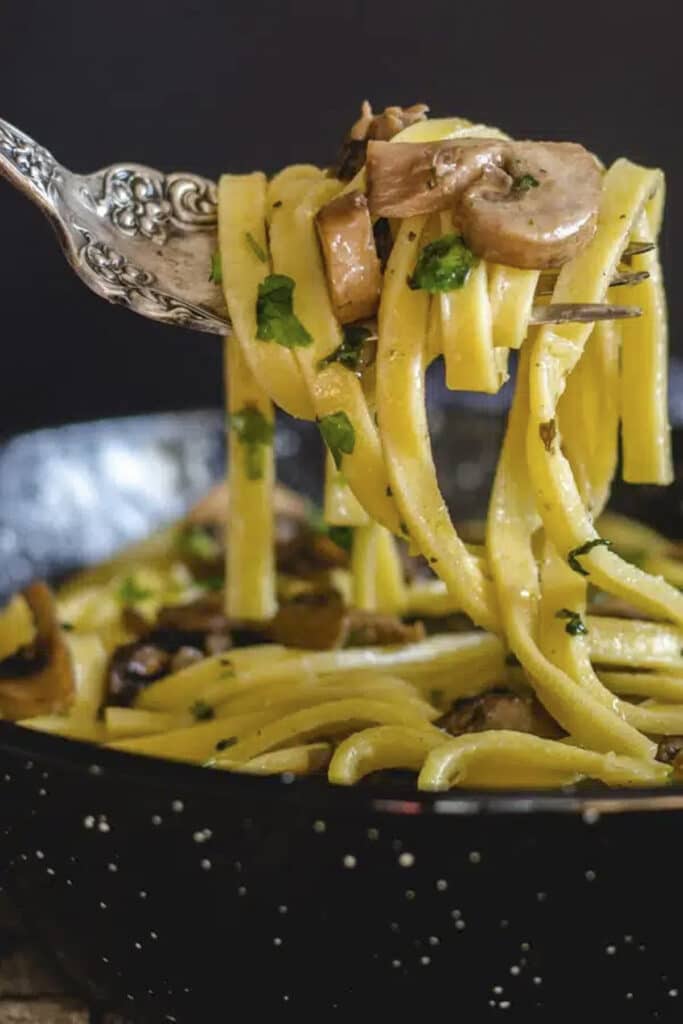
Do you really need olive oil in homemade pasta?
To tell the truth my mother-in-law never added it but my sister-in-law does, either works, but I did find that the pasta with olive oil was easier to work with.
How to store leftover Homemade pasta
Any leftover pasta must be stored in an airtight container and stored in the fridge for up to two days.
How to freeze homemade pasta
You can freeze fresh raw pasta in the various forms as you wish. To freeze, place the pasta well spaced on a baking sheet and then place in the freezer to firm up for a couple of hours. When the pasta is firm, move to a freezer bag or container and freeze. When you are ready to eat, boil directly from frozen in boiling water and proceed as per the recipe.
More delicious homemade Pasta recipes
- Crepe Cannelloni with Meat Sauce
- Homemade Sourdough Pasta
- Homemade Potato Gnocchi
- Simple Homemade Pasta
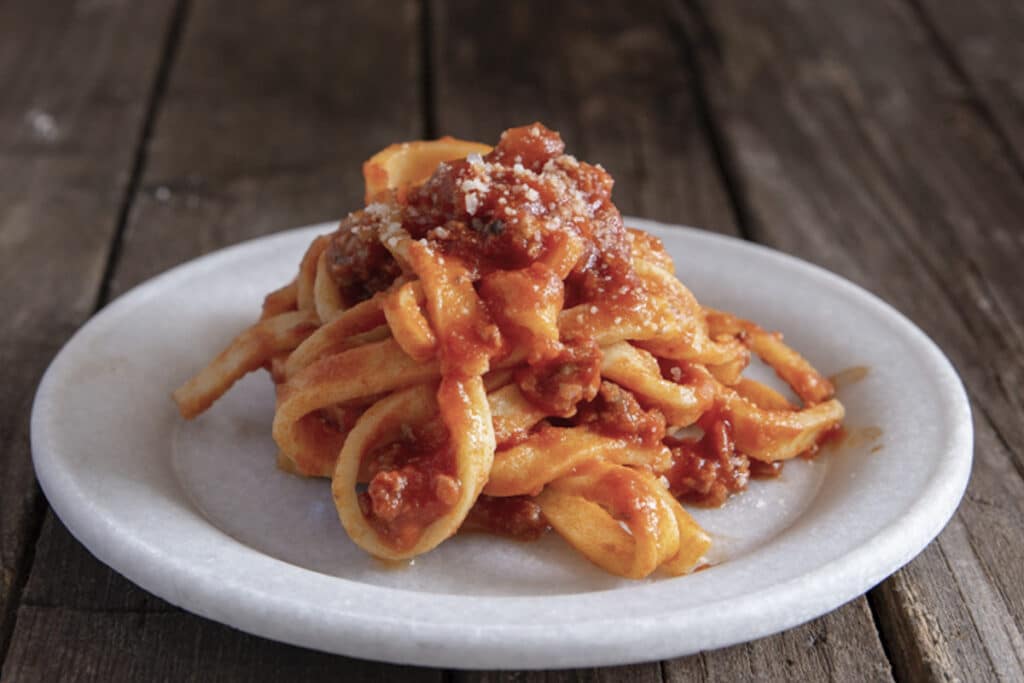
Crafting homemade pasta from scratch is a labor of love that yields extraordinary results, elevating your dining and cooking experience to new heights. So, gather your ingredients, roll up your sleeves, and lets cook Italian! Buon appetito!

Authentic Homemade Pasta
Ingredients
- 2½ cups all purpose flour 300 grams
- 2½ cups 00 flour 300 grams
- 6 large eggs (room temperature)
- 1-2 pinches salt
- ½-1 tablespoon olive oil
Instructions
- On a flat surface place the flour and make a well in the middle, add the eggs and gently start to combine the the two, add a drizzle of olive oil and the salt, continue to bring the ingredients together and knead to form a smooth and elastic dough.
- Cover the dough with a clean cloth and let rest. This step is extremely important as it allows the gluten to relax, the flavors to blend together for the dough to achieve the perfect texture. After resting, the dough is then sliced and gently flattened with the palm of your hand.
- Then roll the dough out into thin sheets, be sure to keep the dough well floured to avoid it sticking, either with a machine or by hand, or shaped into a variety of forms. We decided to use the machine again to cut into fettucine, then place the pasta on a floured flat surface, be sure to lightly dust the pasta again with four to keep it from sticking.
- In a large pot of boiling salted water, (adding a drizzle of olive oil), cook the fettuccine until al dente, drain and toss with your choice of sauce and serve with a sprinkle of parmesan cheese if desired.
can you tell me how many times to run dough through the machine and at what settings.
Hi Louise, we did it 2 times through the 2nd thinnest then once through the thinnest. Let me know how it goes. Take care!
Rosemary, this is just like Nonna taught every one to make! Sunday, the big bed, which was only a full in those days, was covered with a clean white sheet. Soon, it would be covered with homemade pasta. Everyone would come for dinner after church. Wow, those were the days! I still occasionally break out my macaroni board and crank machine…..but, not every week! Thanks again!
Hi Lydia, great memories, nothing like homemade pasta that’s for sure. Take care and Happy New Year!